Lost and found!: rediscovering the Bronze Age shaft at Belle Tout
19/04/2016 | Oliver Hutchinson
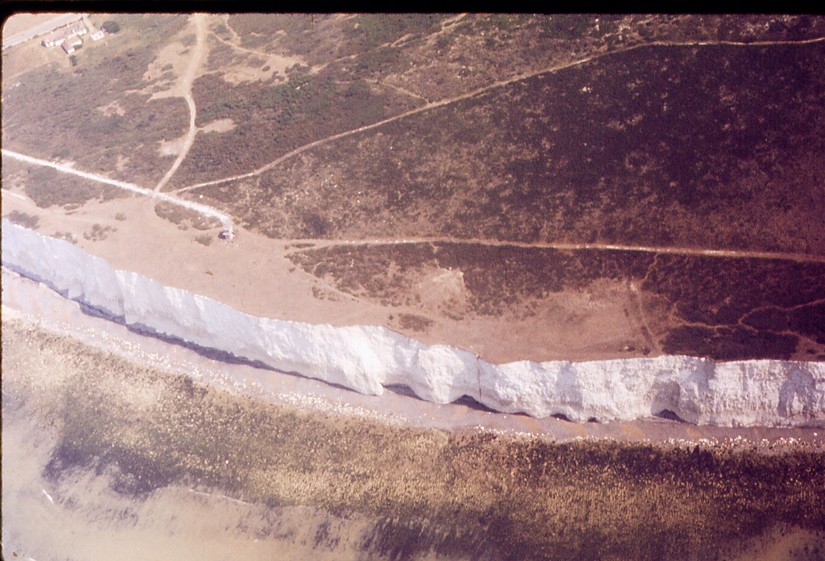
The Belle Tout shaft from the air
In 1976 a section of the fragile chalk cliffs of Birling Gap, East Sussex collapsed to reveal an archaeological wonder unique to the English coastline. A beautifully cut circular shaft complete with hand and foot holds as well as visible tool marks sat in perfect section, stretching nearly 40m from the wave cut chalk platform on the foreshore right up to the top of the cliffs.
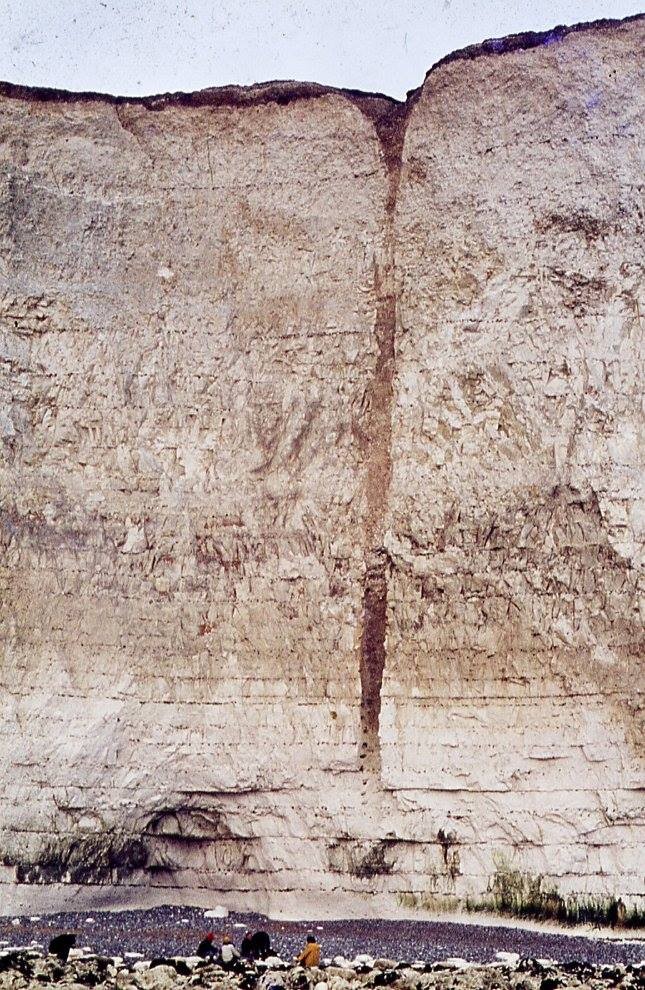
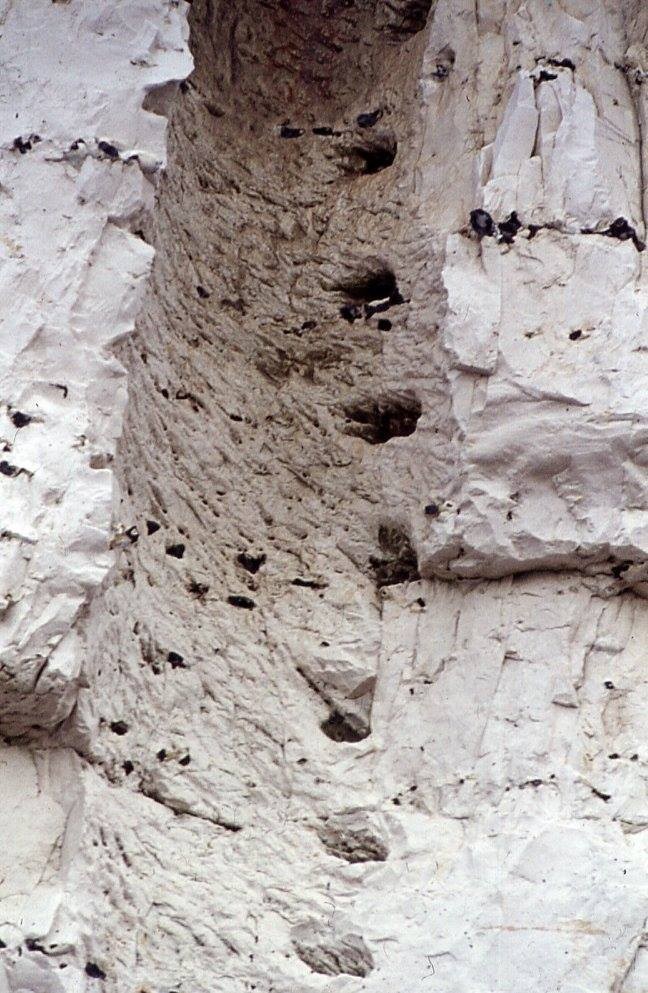
The mouth of the shaft lay within the Bronze Age enclosure of Belle Tout, a site that was originally brought to the attention of the Society of Antiquaries in 1806 when a similar cliff fall revealed a Bronze Age hoard of artefacts on the foreshore below.
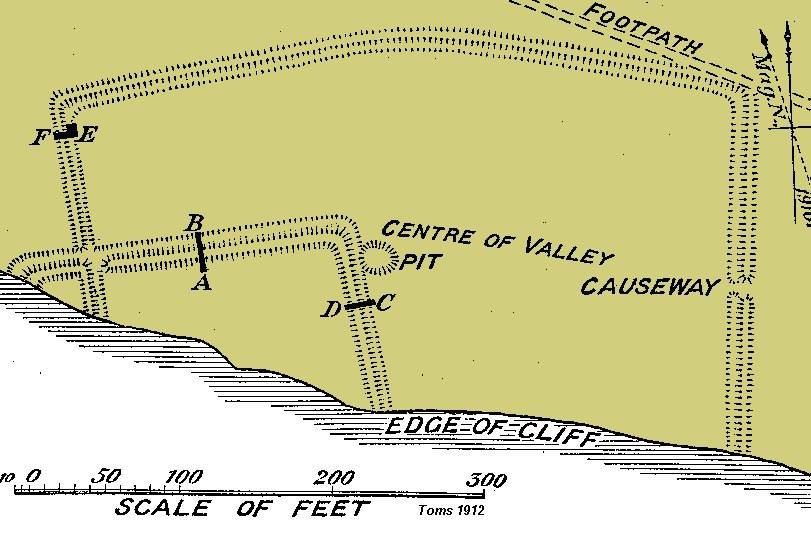
Originally labelled as a chalk pit during excavations at Belle Tout in 1968-69 by Richard Bradley, it wasn’t until the cliff fell that the true nature of the pit was revealed. The shaft sat exposed to the elements for 5 years before erosion took its toll and the cliffs fell again removing all traces and rendering it lost to the sea for good.
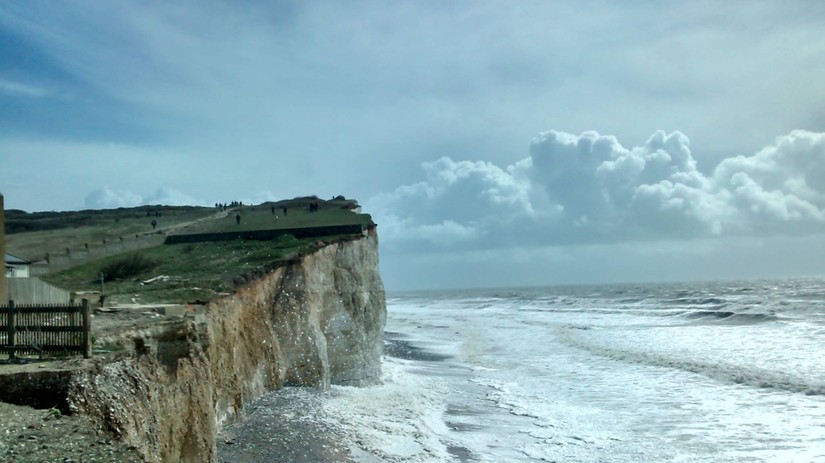
Or was it…?
In November 2015 CITiZAN in partnership with Allen Environmental Archaeology, the South Downs Research Group and the National Trust wardens and volunteers of Birling gap initiated a foreshore monitoring project to try and locate the base of the shaft. Using plans drawn by Herbert Toms in 1909 and from the 68-89 Bradley excavations coupled with erosion data for the coastline, a search area was drawn up and our volunteers got to work.
After many dedicated months of almost daily visits by our amazing Shaft Searcher volunteer team - success!
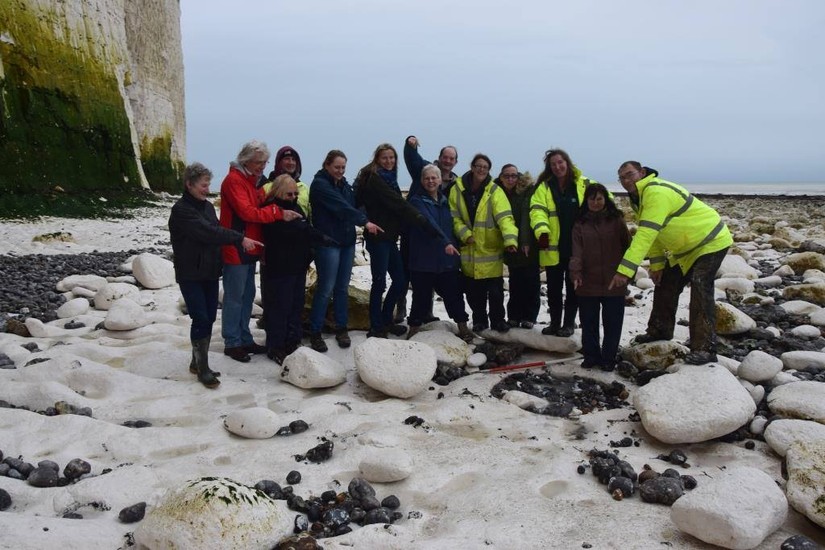
In February 2016 the base of the Belle Tout shaft was found once again! Fittingly, it was yet another erosive event that played a part in furthering our knowledge of this fascinating site. Storm Imogen lashed the beaches and stripped the deep shingle cover from the wave cut platform to reveal an almost perfectly circular feature 90cm in diameter.
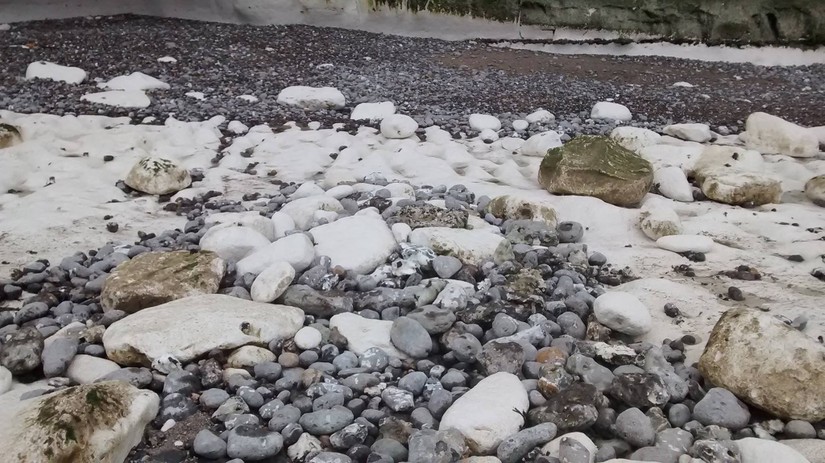
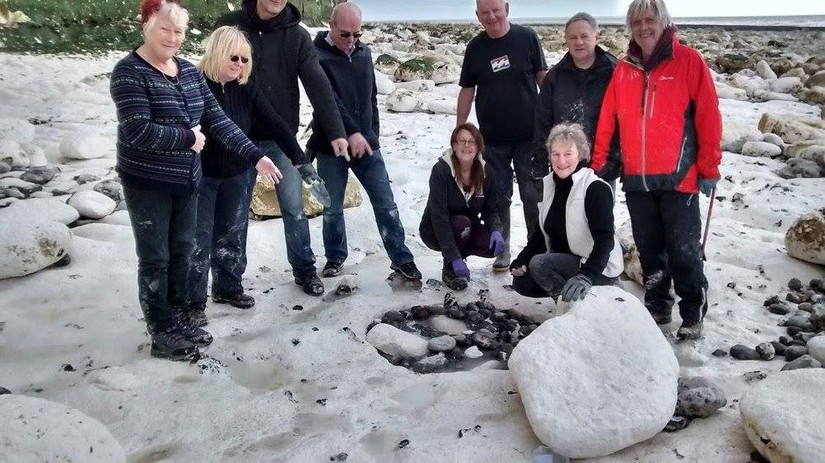
In the following months our team continued to monitor the site several times a week to ensure that the cap stone they placed over it remained and it stayed hidden until a proper excavation of any potential materials within could be carried out.
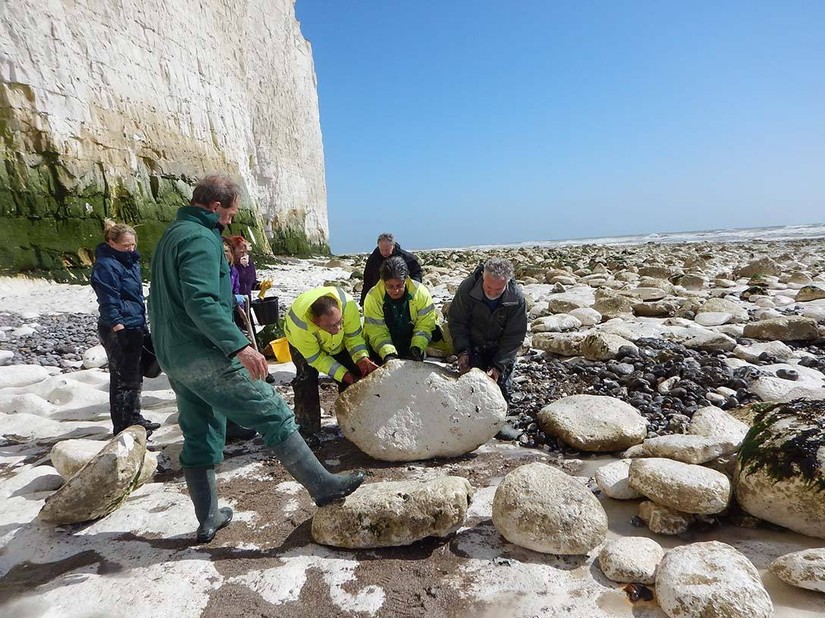
In the last few weeks our incredible volunteer team led by Dr Mike Allen and Professor Martin Bell returned to the site and were able to excavate the base of the shaft.
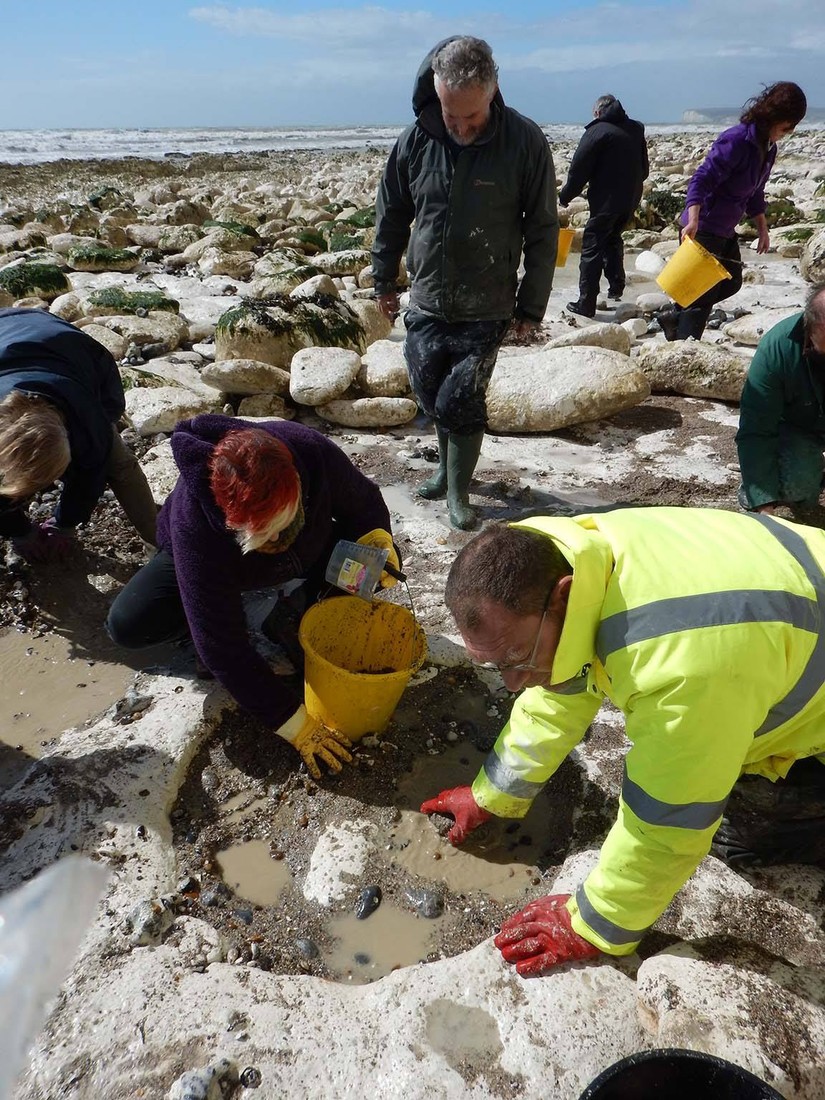
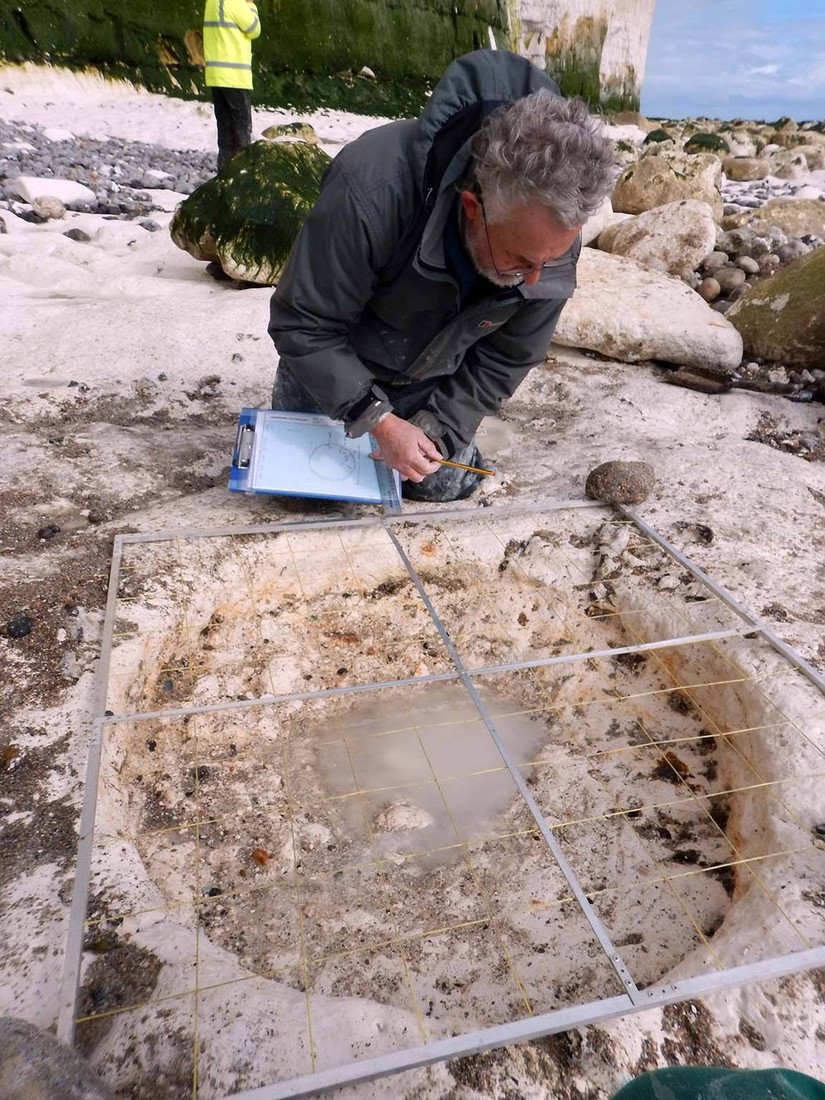
The team found that only 28cm of the 40m shaft remained but during the session were able to take samples from tool marks and stains that were still within the chalk as well as taking casts of the tools and creating a 3D model of the shaft. A report on the shaft excavation will follow and if you’d like to receive a copy be sure to sign up to our newsletter via the CITiZAN website.

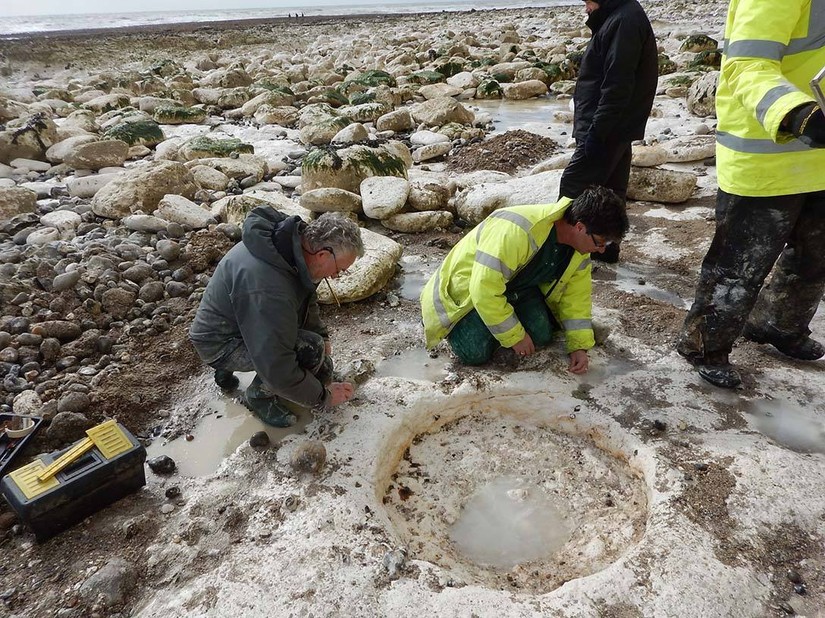
Whilst it wasn’t as deep as the team had been hoping for the find only serves to highlight that without dedicated volunteers and the CITiZAN project monitoring the coastline, features such as these would not be found. The base of the shaft has been eroded by the shingle since its collapse in 1981 and would have continued to be eroded until the wave cut platform into which it was carved disappeared.
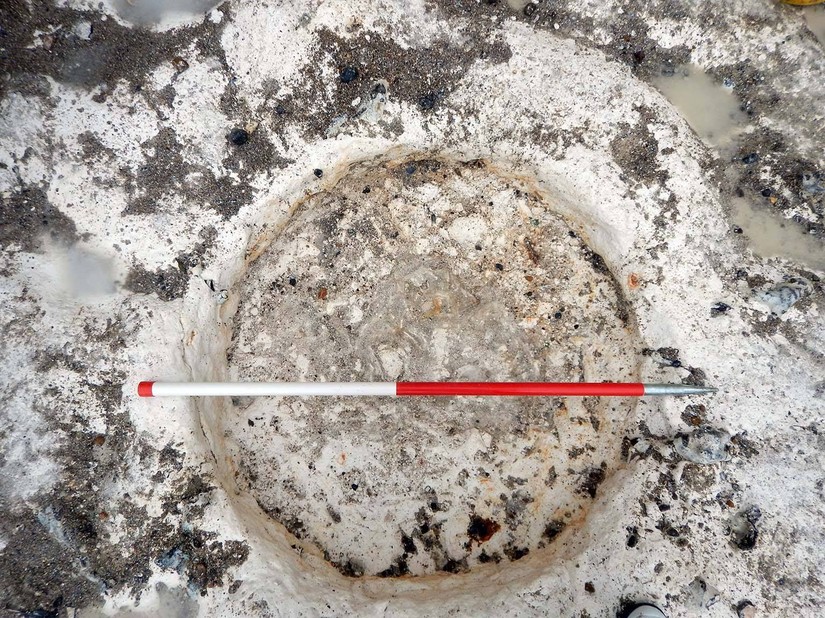
The Shaft Searchers are now our most active coastal monitoring group and have formed the South Downs Research Group. They have just started using the CITiZAN app to update the wider foreshore of the South Downs and we can’t thank them, Dr Mike Allen and our partners the National Trust enough for their commitment to this project and to the wider CITiZAN project. Look out for a blog from our Shaft Searchers soon.
If you want to get involved in a fascinating archaeological project this year check out our events page on the CITiZAN website and sign up today!








